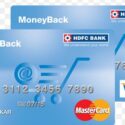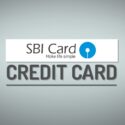Tips and Tricks to Knock Out Your Credit Card Debt
Dealing with credit card debt can feel overwhelming. The interest charges, late fees, and minimum payments that never seem to make a dent can leave you feeling like you’ll be stuck in debt forever. But there are solutions.

With the right strategies and determination to clear your dues, you can take control of your credit card debt. This comprehensive guide provides actionable tips to help you get back on track financially.
Adopting a Proactive Payment Strategy
The first step is adopting a proactive approach to start chiseling away at your balances. With international credit card debt averages now exceeding 20%, it’s crucial to do more than just pay the minimum.
Pay More than the Minimum
Paying the minimum only allows interest to accumulate and prolongs how long you remain in debt. Where possible:
- Pay double the minimum – This significantly reduces interest fees over time. Even an extra $20 can make a difference.
- Pay weekly – Making smaller payments more frequently reduces balances faster.
- Make an extra payment – Whether monthly, quarterly, or whenever possible, an extra payment directly lowers the principal.
Employ the Debt Avalanche or Snowball Methods
The debt avalanche and snowball methods offer systematic approaches to deciding which debts to pay off first.
The debt avalanche method involves listing debts by interest rate and focusing on the card with the highest rate first. This mathematically tends to minimize interest paid overall.
The debt snowball method focuses on paying off your smallest debts first before rolling those payments over to the next in line. The quick wins can build momentum to keep your debt in control.
| Method | Pros | Cons |
| Debt Avalanche | Minimizes total interest paid | Can take longer to see initial debts paid off |
| Debt Snowball | Early payments build momentum | May incur more interest overall |
Choose the approach best suited to your needs. The key is consistency.
Automate Your Payments
Set up automatic minimum payments on all cards to avoid late fees, and have extra funds auto-transferred for any debts you’re trying to clear. This prevents missed or delayed payments.
Staying disciplined is crucial when addressing credit card debt. Adopting proactive payment strategies and techniques lays the groundwork.
Considering Debt Consolidation
If managing multiple credit card payments feels overwhelming, combining your balances into one loan can make the process easier. Here are two common options:
0% Balance Transfer Credit Card
These cards offer 0% intro APR periods, often between 12-21 months. Transferring your balances to one of these cards stops interest for the intro period, allowing you to focus on repayment. This strategy works best if you can pay off the balances within the promo period. Average credit card debt is now $5,910, so assess if it’s achievable. [Source: CreditCards.com]
Personal Loans for Debt Consolidation
Personal loans allow you to consolidate your credit card debt into one fixed monthly installment loan at a lower interest rate, simplifying repayment. While rates vary by lender, they tend to be considerably lower than typical credit card APRs.
Consolidating through a personal loan or 0% balance transfer card can provide much-needed breathing room. Make sure to weigh the pros and cons.
Collaborating with Creditors
If you’re struggling to keep up with minimum payments, pick up the phone and call your creditors. With credit card debt increasing in 2022 to an average of $5,910 from $5,221 in 2021, many consumers find it hard to repay debts. Creditors have programs to help.
Negotiate Lower Interest Rates
Issuers may lower rates, especially if you have a history of on-time payments. This reduces the portion of your payment going to interest. Even a few percentage points can make a difference.
Request Hardship Programs
Hardship programs provide relief if you face issues like medical expenses or job loss. Benefits may include reduced or suspended payments, lower rates, and waived fees.
Don’t hesitate to advocate for yourself. The creditor would rather work with you than lose you as a customer.
Exploring Debt Relief Options
If you’ve tried consolidation, negotiating with creditors, and reducing expenses without success, more extreme debt relief options may be your last resort:
Debt Management Programs
Debt management programs through nonprofit credit counseling agencies can negotiate with your creditors to reduce interest rates and create a consolidated repayment plan to help you pay off debt in 3-5 years.
Bankruptcy
Filing for bankruptcy pauses collections and wipes eligible debts clean, providing immediate relief. But it stays on your credit report for 7-10 years. Chapter 7 bankruptcy eliminates most unsecured debts while allowing exemptions to retain property. Chapter 13 bankruptcy establishes a 3-5 year repayment plan for debts.
Debt Settlement
Debt settlement involves negotiating to pay a lump sum that is less than the total owed, often 30-50%. The issuer agrees to consider the debt paid. However, you must first save the full settlement amount as creditors won’t accept this option if you can’t pay promptly. Debt settlement also has tax implications.
Tips to Accelerate Debt Repayment
Adopting some of these tips can accelerate the repayment process:
- Make more than one payment per month – This reduces principal faster.
- Pay a little extra whenever possible – Whether using a tax refund, bonus, or other influx of cash, make an extra debt payment.
- Review expenses and make cuts where feasible – Reducing unnecessary spending allows directing more money to debt repayment.
- Increase income – Consider freelancing, monetizing a hobby, or taking on a side gig for extra income to supplement debt payments.
Frequently Asked Questions
What are the key differences between the debt snowball and avalanche methods?
The debt snowball method prioritizes paying off the smallest debts first before moving to the next largest. The debt avalanche method focuses on paying debts with the highest interest rates first regardless of balance size.
How can debt consolidation help me?
Debt consolidation combines multiple debts into one account, helping simplify repayment. It can also lower monthly payments and interest rates, making repayment easier.
Are there risks associated with debt settlement?
Yes. Debt settlement can negatively impact credit scores and lead to tax liabilities for forgiven debt. It should be a last resort option after careful consideration.
The Bottom Line
Credit card debt can feel suffocating but there are options. Using proactive payment strategies, considering consolidation, negotiating with creditors, and reviewing your budget can all help overcome debt. If those prove insufficient, more drastic debt relief methods may provide the reset you need. But avoid taking these lightly given the implications involved.
With resourcefulness and commitment, you can take charge of your debt situation. No matter how deep the hole seems now, there are solutions to climb back out if you stick to a definitive repayment plan. Take that first step today.



